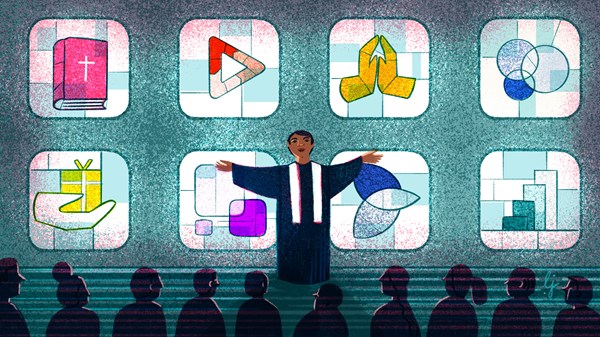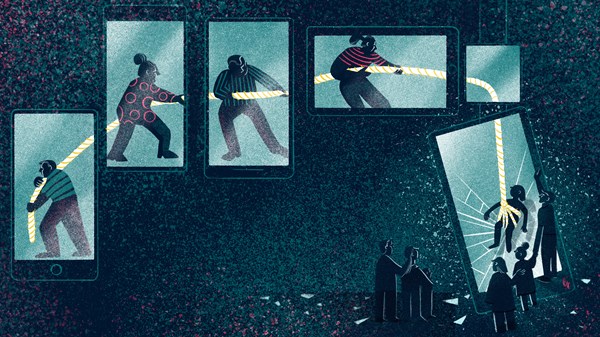David Sauer was visiting his daughter and newborn grandson when his mobile notifications started to go wild. Sauer, the executive pastor of Adventure Church in Yuba City, California, stopped short after glancing at his screen. Their church of around 1,000 congregants had suffered two tragic and unrelated deaths. One family had lost their father, another their mother.
Research shows that the bereaved often face loneliness and inadequate social support as they grieve. When that isolation occurs, the grieving face increased risks for depressive symptoms and are less likely to develop healthy coping mechanisms. But when bereaved people have frequent contact with their community, whether in person or through technology, they report a better quality of life than their counterparts without such contact.
Aware that families in his church were hurting deeply, Sauer wanted to minister to them as quickly and effectively as possible. But what could he do while he was hours away from them? Fortunately, the answer was right at his fingertips.
Empowered to Comfort
Pastors with the ability to connect with congregants in crisis can help make the difference between grief that drives people to isolation and grief that draws people into community. In order to make those quick connections, ministry leaders need easy access to information about their congregants. These insights create a safety net that can catch the hurting as they fall–a ministry that is woven together by invaluable data.
For Sauer, that quick connection began with pulling up the LEAD app, which Adventure Church staff and volunteers use to remain connected with the needs of their congregation. Like an online, interactive church directory, the app empowers ministry leaders to engage with their congregants—even when those ministry leaders are, like Sauer was, on the go.
Sauer pulled up the app, searched for one of the affected families, and was immediately able to see a picture of the deceased, their spouse, and children. He also saw links to other families in the church who were related to them and, with a single tap, had access to phone numbers so he could text or call the family members.
“In the case of the mom passing away,” said Sauer, “I was able to call the dad and pray with him over the phone even from Southern California.” He also used the app to text the children of the family who, as teenagers, may not have been as receptive to a phone call but needed to hear that they were loved, prayed for, and remembered in their grief.
Without the app, Sauer says, he wouldn’t have had such quick, easy access to the family, much less with a featured photo in order to be sure he was remembering the right congregants—a reasonable concern in a church so large. The extensive data offered in the app made it easy to offer a safety net of compassionate care when the family needed it most.
Enabled to Care
Individual and family crises are not the only times when technology has helped Sauer and his staff shepherd their flock. When the COVID-19 pandemic hit, their team turned to the app to help them reach out to congregants they could no longer see face-to-face.
The ministry staff divvied up the contacts and were able to directly text people from the app. They set up a script to work from for the initial contact—a simple message like “Hey, this is Pastor Dave from Adventure Church. We’re thinking about you and hope things are going well. I’d love to catch up over the phone. Is there a time we could talk?”
From there, conversations unfolded that included everything from praying by phone to learning that elderly shut-ins were in need of grocery drop-offs. The app even helped the team navigate these drop-offs with a map feature that identified staff and congregants who lived near the individuals in need.
Equipped to Connect
Whether it’s the calendar feature that highlights church events, the messaging tool that allows small group leaders to share prayer requests with their members, or the little building blocks of relationships—like a fantasy football trade that Sauer made by contacting a buddy through the app—the LEAD app is, as Sauer puts it, “high tech that leads to high touch.”
When a member passes away, the app connects church leaders with loved ones. When a member of a small group falls ill, the app shares the link to a meal train. And when a global pandemic hits, trapping the most vulnerable congregants inside their four walls, the app literally guides the way to their front porch.
Sauer says that these technological touchpoints have led to increased engagement at Adventure Church. While many churches are struggling to reinvigorate their congregants after the pandemic, Adventure Church’s ability to maintain personal, regular communication with their people paved the path toward eager engagement when restrictions were lifted. And when crisis hits, the LEAD app continues to be a way that Adventure leaders draw near to the congregation, moving toward them with compassion and care.
Pastors and church leaders who want to respond well to crises may not feel sure where to start. Pushpay’s Leading in Crisis ebook highlights practical ways that congregant data can inform effective ministry and care. Download Pushpay’s ebook to learn how to minister in difficult times.


